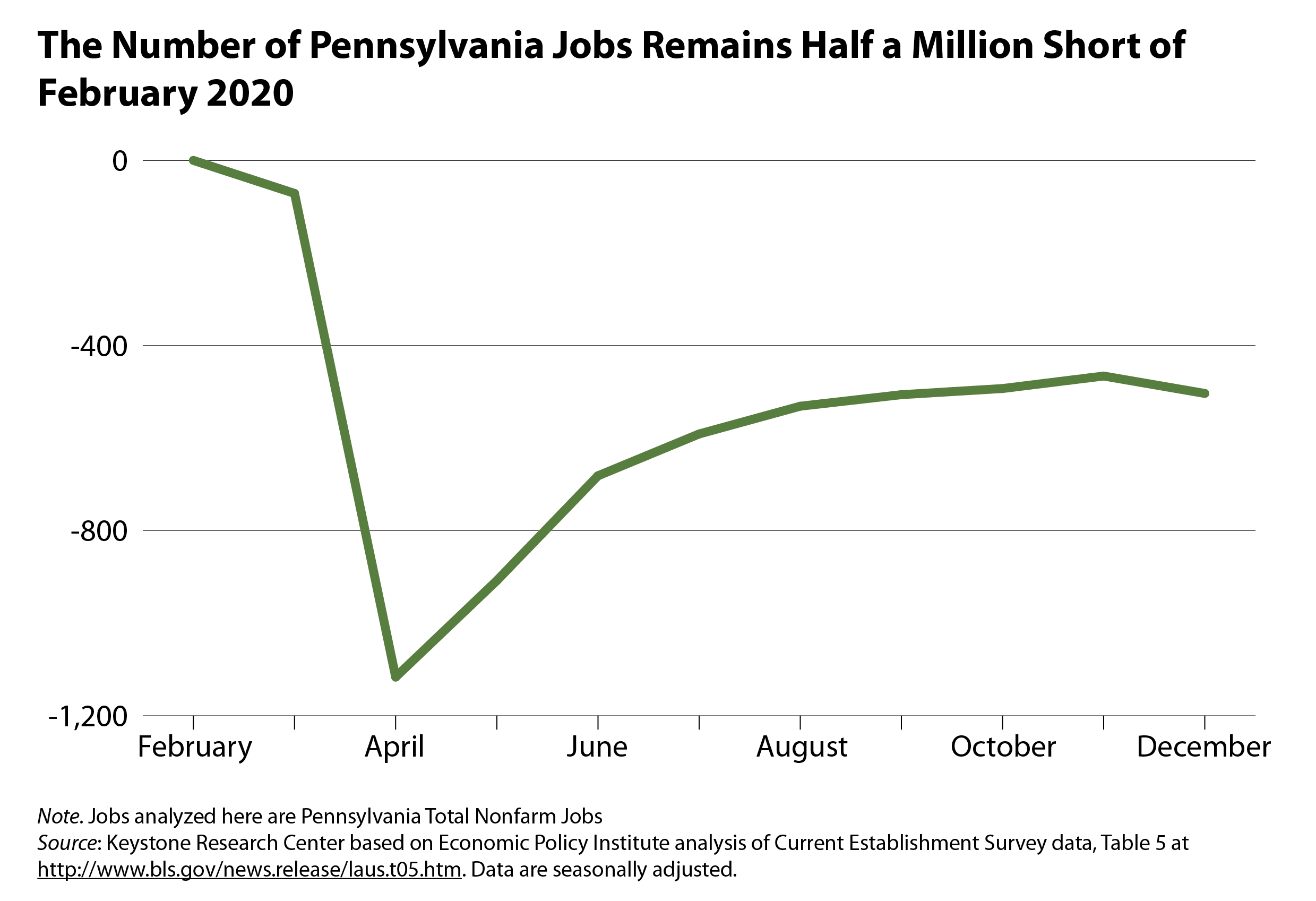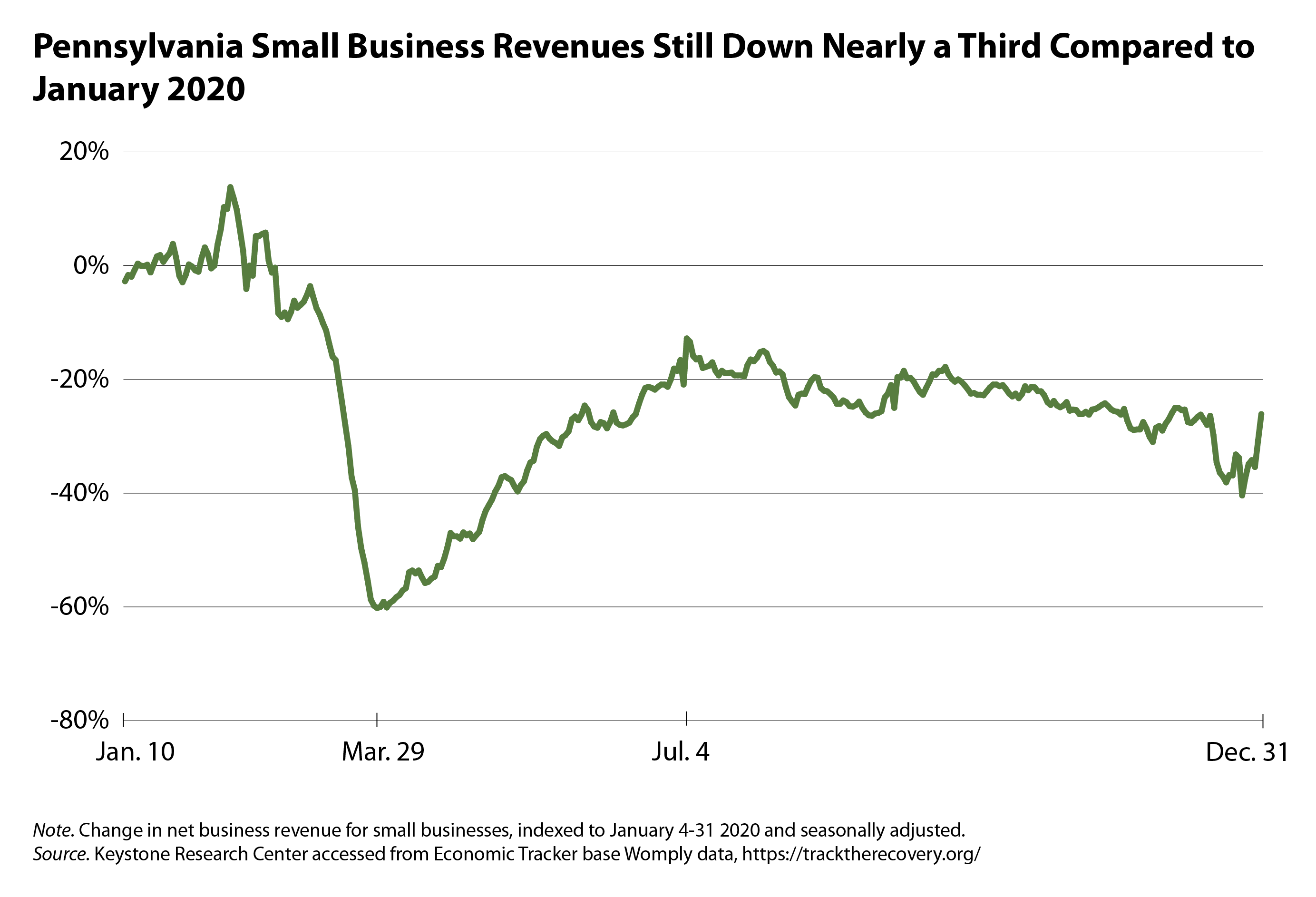Economists use multiple measures to assess the health of Pennsylvania’s economy. Special care is needed to identify reliable measures when the economy is in a downturn, including the true devastation caused by the current pandemic. This blog presents trends for two revealing short-term measures of economic health for workers and for small businesses: jobs and small-business revenues. Our findings: our economy remains in a deep hole, having recovered only about half the ground lost by these measures pre-COVID to April 2020. Small business revenues remain over 25% below the level of January 2020, a stunning Depression-level collapse. The policy message: federal and state lawmakers must continue to provide robust relief, and then economic stimulus, to reduce the damage experienced by our workers and small businesses.
One commonly cited measure of economic health is the unemployment rate. Today, in 49 states, the unemployment rate remains higher than in February of 2020. In Pennsylvania, the unemployment rate spiked at 16% in April 2020 and has since dropped to 6.7%, compared to 4.6% in February. These figures make it seem like Pennsylvania’s economy has largely rebounded from the steep plunge in March and April 2020. That impression is misleading, however, because the unemployment rate underestimates joblessness. The reason: many workers who lose jobs are not counted as unemployed because they are not looking for work—understandably so given that looking for work in the pandemic requires risking your health.
To avoid the definitional complexities associated with the unemployment rate—and with alternate, more inclusive measures of unemployment—the simplest approach is to look at the number of jobs on the payrolls of Pennsylvania employers. As the next chart shows, from February to April, the state lost over 1.1 million jobs. While Pennsylvania regained a lot of jobs from April to August, job growth has stalled since then, in part because the resurgence of the coronavirus makes businesses reluctant to reopen and workers reluctant to return to work. In December 2020 (the latest state-level data available), we still had half a million fewer jobs than in February of 2020.
Along with the sluggish recuperation in jobs since August, initial weekly Unemployment Insurance claims during recent weeks remain nearly twice as high as pre-COVID. (Initial weekly unemployment claims in Pennsylvania averaged over 35,000 in the last 10 weeks ending January 23 versus 21,000 in the equivalent 10-week period a year earlier.)
Turning to small businesses, one simple way to track their health is based on weekly small business revenue. Small businesses suffered a stunning 60% plunge in revenues from December 2019 to April 2020. Small business revenues then recovered rapidly by the end of June—but have since gone back down slightly. In the last few weeks, small business revenue bounced around a lot but remained roughly 30% below the level of January 2020.
These indicators make it abundantly clear that this recession will not subside on its own, even as the economy opens and vaccinations are distributed. We require additional federal relief for struggling small businesses and workers followed by aggressive stimulus so that small business revenues and the number of jobs can both recover to pre-COVID levels and begin self-sustaining growth from there.



